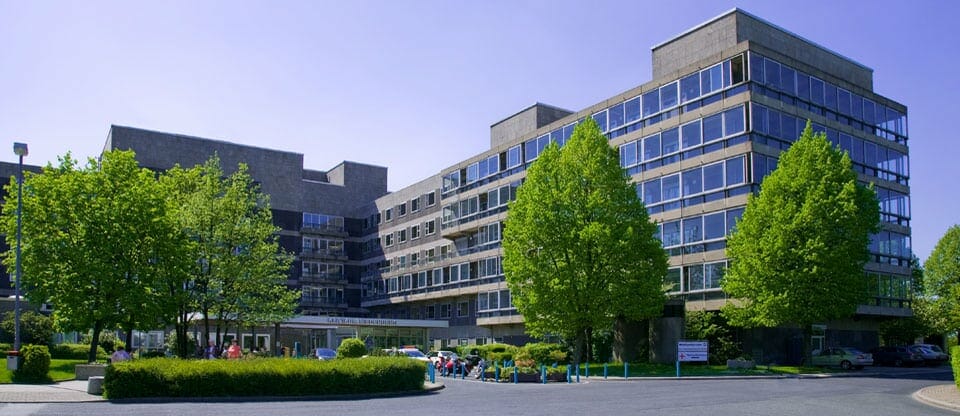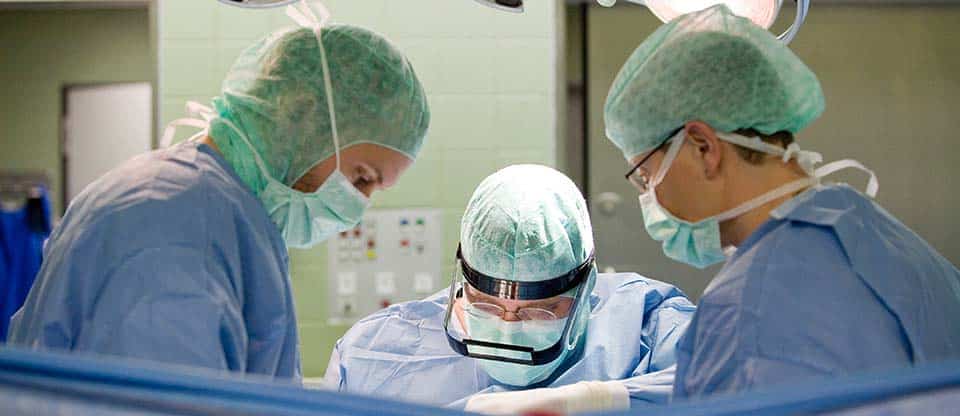Thanks to highly modern methods of diagnostic imaging, it is now possible to detect even the smallest changes in the mammary glands, which manifest themselves in the form of calcium deposits, the so-called microcalcinosis. The initial cancer stages (“pre-invasive lesion”, “precancer”) are spoken of when cells change, from which breast cancer may someday develop. These include:
- Intraductal hyperplasia (UDH): an increased number of normal cells in the ducts of the breast,
- Intraductal atypical hyperplasia (ADH): the presence of altered cells in the ducts of the breast,
- Lobular intraepithelial neoplasia (LIN): the presence of altered cells in the lobules of the breast,
- Squamous atypia (FEA): the presence of altered cells in the ducts and / or lobules of the mammary gland,
- Ductal carcinoma in situ (DCIS): abnormal cells in breast ducts, non-invasive cancer
Percentages distinguish individual precancerous conditions in relation to the risk of cell transformation, and it is also known that young women and those with a high family risk for breast cancer have a higher risk of developing cancer from altered cells at one of the precancerous stages. Yet, unfortunately, it is impossible to predict which of these changes will ever really turn into a malignant process, and which will not. There are no general guidelines for dealing with these first stages of breast cancer, so in each individual case, with the exception of DCIS, the question must be decided individually whether it is possible to wait or it is better to start treatment immediately. This is solved within the framework of interdisciplinary conferences in certified centers.
DCIS
In the presence of DCIS (ductal carcinoma in situ), we are talking about an early stage of breast cancer localized in the milk ducts, when the tumor has not yet spread to the surrounding tissues (“in situ” = “in situ”, non-invasive). Therefore, it does not metastasize, which means that it does not spread daughter tumor cells throughout the body. Because there is a greater risk of developing cancer in the presence of DCIS compared to other early stage cancers (14–60%), and because unlike invasive carcinomas, this type (DCIS) is almost always curable, treatment is now recommended for safety. all of these women—even if some of these patients might not have needed to. Therapy may include surgery, radiation, and also antihormonal therapy.
Malignant tumors
Invasive forms of breast carcinomas are divided into ductal or ductal (located in the milk ducts), lobular or lobular (located in the glandular tissue of the breast) and some rare variants. Ductal carcinomas appear most often in 70 - 80% cases, less common (about 10 -15%) lobular forms of carcinomas. The different types differ from each other in terms of prognosis: lobular carcinomas, for example, are more favorable in terms of treatment than ductal carcinomas.
TNM-classification of tumors
tumor size:
- T1 – tumor size < 2 cm,
- T2 - 2 to 5 cm,
- T3 – > 5 cm at largest diameter
- T4 - all tumors that grow into the chest wall or into the skin.
Damaged lymph nodes:
- N0 - no damaged lymph nodes
- N1 - from one to three axillary lymph nodes are damaged
- N2 - four to nine axillary lymph nodes are damaged
- N3 - ten or more metastases in the axilla or under/above the collarbone
- M0 - no distant metastases
- M1 - presence of distant metastases
Other factors that are considered when classifying tumors are:
- The structure of the tumor (Grading). It shows the aggressiveness, respectively, the rate of tumor growth. (G1–3),
- The prevalence of cancer cells along the paths of lymphatic drainage. (L1: yes, L0: no),
- Extent of cancer cells in blood vessels (V0: not detected, V1: microscopically proven, V2: macroscopically detected),
- Radicality of the performed operation (R): R0-resection = complete removal of the tumor with the capture of healthy tissues; R1- resection = tumor removal along its edge, which means that tumor grows to the limit fabrics; R2 resection = the tumor is not completely removed, which means that a visible remnant of the tumor remains in the body.
Example: pT1 G2 pN0 (sn) M0 R0 means that here we are talking about a small, moderately differentiated tumor without damage to the sentinel lymph nodes and without distant metastases, pathohistologically revealed that with a given size of the tumor and the degree of damage to the lymph nodes, removal within healthy tissues is possible.
Tumor Biology: Characterization of Breast Tumor
Molecular biology studies that help characterize the respective tumor are increasingly important steps towards individually tailored therapy. For this, tissue material is taken, which was obtained during a biopsy or during removal of the tumor. On the one hand, the so-called biological tumor markers (“biomarkers”) help to assess the degree of malignancy of the tumor and, at the same time, the chances of recovery for the patient (“predictive markers”). On the other hand, they also provide valuable indications of how the tumor can be targeted and which therapy is necessary and effective in which patients ("predicative markers").
Many of these markers have already been identified in various types of cancer - the trend is growing.
Status of hormone receptors
The hormones estrogen and progesterone can influence the growth of breast cancer cells. They bind at the junctions of the cell, with receptors that transmit the growth signal to the inside of the cell. In order to establish whether a tumor grows in a hormone-dependent manner, how large the participation of cells and the mass of the corresponding hormone receptors (HR) is examined. If more than 1 % of all tumor cells respond to a special labeling method, it is assumed that the tumor is sensitive to the hormone. This is expressed by the notation ER+ (estrogen receptor positive) and/or PgR + (progesterone receptor positive).
On the other hand, if tumor cells grow dependent on the hormone, this means that it is possible to slow down or stop their growth process by depriving the hormone. In some cases, it is possible to abandon (anti-)hormone therapy in favor of chemotherapy.
Receptor-HER2-status
HER2 receptors are binding sites for growth factors that induce cancer cells to divide. The presence of a particularly large number of HER2 receptors on the cell surface often leads to an aggressive course of cancer. Targeted anti-HER2 therapy blocks these receptors and thereby inhibits cell growth.
Molecular subtypes
In the late 90s, breast carcinoma was investigated at the molecular genetic level and subdivided into various subtypes. These subtypes are associated with different prognosis and further predict how the tumor will respond to different treatment approaches. Because in everyday practice, a molecular genetic study of a tumor for each individual patient would be too complicated, using the HER2 status, the status of hormone receptors and marker cellular proliferation Ki—67 (determines the growth rate of tumor cells) found an alternative classification.
The most important subtypes are:
- luminal A (HR-positive, Ki-67 low),
- luminal B (HR-positive, Ki-67 high),
- HER2 subtype (HER2 positive) and
- triple negative (HER2-negative, HR-negative)
For example, patients with a triple negative subtype have a poor prognosis. For patients with luminal A tumors, purely endocrine therapy is usually sufficient.
uPA/PAI-1-status
Patients with an early-stage breast tumor and no lymph node involvement, whose tumor tissue contains only small amounts of the uPA protein (urokinase-type plasminogen activator factor) and its inhibitor PAI-1, have been proven to have a low risk of recurrence. They can often do without chemotherapy without an increased risk of disease recurrence.
Since the Femtelle® test (unlike hormone receptor and HER2 tests) can only be performed on fresh frozen tumor tissue, pathologists do not have to formalin-fix and paraffin-embed the entire tumor tissue as usual. Therefore, even before the operation, it should be agreed whether it is necessary to determine the uPA / PAI-1 status.
Gene Expression Profile
Tumor cells can be recognized by detecting changes in genes that lead to decreased or increased production (expression) of certain proteins. Using a gene expression profile (also: gene designation, gene profile) from a tissue sample, an attempt is made to determine the activity in cancer cells in order to obtain information on the individual risk of recurrence and select an appropriate therapy. Various methods have already been developed, to which new ones will continuously join.
Methods genchip diagnostics are the so-called "Microarray analysis" and "RT-PCR method". In this regard, commercial test systems such as MammaPrint®, OncoType DX® and EndoPredict® have been developed, which are already well known through advertising and the media and are often requested by patients. However, the informativeness of these tests has not yet been finally confirmed, and therefore they are still recommended only by some German professional ones.
Video
Request appointment
Useful links

















